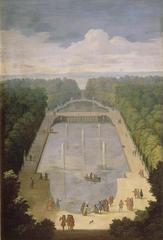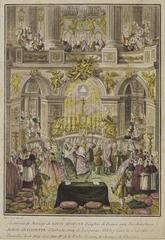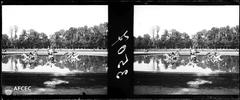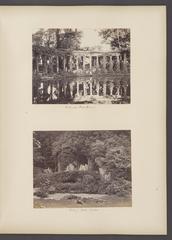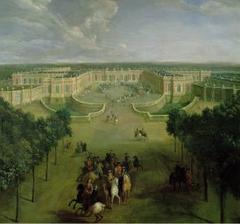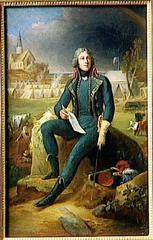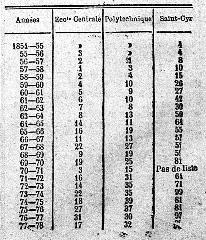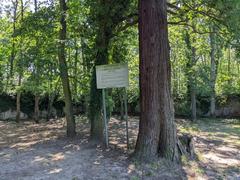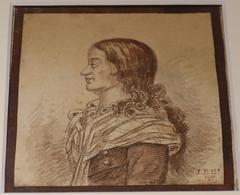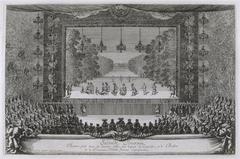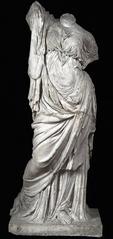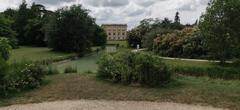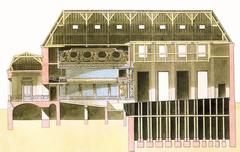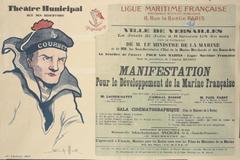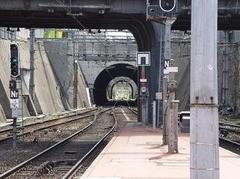House of Doctor Le-Monnier, Versailles: Visiting Hours, Tickets & Historical Guide
Date: 03/07/2025
Introduction
The House of Doctor Le-Monnier in Versailles stands as a remarkable testament to the Enlightenment era—a period marked by scientific discovery, intellectual gatherings, and refined architectural taste. Often overshadowed by the grandeur of the Palace of Versailles, this historic residence offers visitors a unique glimpse into the life and legacy of Pierre Charles Le Monnier (1715–1799), a distinguished astronomer and royal physician, and his brother Louis Guillaume Le Monnier, a renowned botanist. Situated in the Montreuil district, the house blends botanical heritage, neoclassical architecture, and cultural significance, making it a must-see for those seeking to explore Versailles beyond its famed palace walls.
Whether you are drawn by history, science, or architecture, the House of Doctor Le-Monnier provides a window into the rich intellectual and social life of 18th-century France. Its surviving gardens, including the iconic Cedar of Lebanon planted by Le Monnier, and its elegant limestone façade reflect the restrained yet sophisticated aesthetics of the Enlightenment bourgeoisie. While access to the interior is generally reserved for special events or guided tours, the house and its gardens remain accessible for exploration during heritage days, making it a rewarding stop for curious travelers.
For current visiting hours, ticketing options, and the latest event schedules, consult the official Versailles tourism website and consider the Audiala app for interactive guides and insider tips (House of Doctor Le Monnier: History, Tickets, and Versailles Historical Sites). This guide provides historical context, practical visiting information, and highlights to ensure a memorable experience at this unique Versailles landmark.
Historical Background of the House of Doctor Le-Monnier
The House of Doctor Le-Monnier, also known as the “Maison du Docteur Le Monnier,” is a notable example of 18th-century residential architecture in Versailles. The property, rebuilt in 1752 for Anne Larcher, Comtesse d’Argenson, was later acquired by Pierre Charles Le Monnier—a pivotal figure in French astronomy and a member of the Académie des Sciences. Le Monnier and his brother, Louis Guillaume Le Monnier, contributed significantly to the fields of astronomy, botany, and medicine, and their residence became a hub for intellectual exchange during the Enlightenment (Versailles, lieu d’influence et de pouvoir).
The estate’s Montreuil location was celebrated for its horticultural richness, and under Le Monnier’s stewardship, it evolved into a center for botanical experimentation and the acclimatization of exotic plants. The gardens, which still feature the famous Cedar of Lebanon, served as an outdoor laboratory and a training ground for botanists who would later achieve international renown.
Architectural and Cultural Significance
Architectural Features
- Neoclassical Style: The house exemplifies late 18th-century neoclassical architecture, with harmonious proportions, a finely cut limestone façade, symmetrical windows, and restrained ornamentation.
- Elegant Details: Features such as wrought-iron balconies, a modest entrance with stone steps, and a steep slate roof with dormer windows reflect the period’s refined aesthetic.
- Interior Highlights: The ground floor likely contained reception rooms and studies for intellectual gatherings, while upper floors housed private quarters. Period elements such as parquet flooring, decorative fireplaces, and plasterwork ceilings have been preserved (Musée Lambinet).
Cultural Importance
- Intellectual Hub: The residence was a gathering place for scientists, philosophers, and artists, facilitating the exchange of ideas central to the Enlightenment. Le Monnier’s salons attracted leading thinkers and contributed to Versailles’ reputation as an intellectual center (Versailles, ville des arts et de la culture).
- Botanical Innovation: The gardens were renowned for their diversity and served as a model for botanical research. Le Monnier’s influence extended to students like André Michaux, who would later become prominent botanists.
- Heritage Value: Today, the house is a protected historical site, and preservation efforts aim to maintain its architectural integrity and cultural significance (Preservation of natural and cultural heritage throughout France).
Visiting the House of Doctor Le-Monnier: Practical Information
Location and Access
- Location: Situated in the Montreuil district, the house is within walking distance of the Palace of Versailles, the Musée Lambinet, and the Marché Notre-Dame.
- Public Transport: Easily accessible via the Versailles Château Rive Gauche train station. Walking, cycling, or public transport is recommended due to limited parking (Château de Versailles Practical Information).
Visiting Hours and Tickets
- Opening Hours: The house is generally accessible during special events, such as European Heritage Days in September, and through guided tours. Standard visiting hours are usually from 10:00 AM to 6:00 PM during these occasions.
- Tickets: Admission is often free during heritage events or included in the price of guided tours. For ticketing details and event schedules, check the Versailles tourism website.
Guided Tours and Educational Programs
- Guided Tours: Offered during special events, these tours provide historical context, architectural insights, and stories about Le Monnier and his contemporaries. Some tours feature interactive demonstrations of period scientific instruments (Versailles Chateau).
- Educational Programs: School and family programs may be available during events, focusing on Enlightenment science and daily life.
Accessibility
- Mobility: As a historic building, accessibility may be limited. Wheelchair access is generally available in the gardens, but interior spaces may have restricted access. Contact the tourism office in advance for accommodations (Château de Versailles Practical Information).
Photography
- Rules: Photography is usually permitted in the gardens and exterior, but restrictions may apply indoors during special events. Always ask for permission.
Nearby Attractions
- Musée Lambinet: An elegant mansion museum chronicling Versailles’ history and decorative arts (The Crazy Tourist).
- Marché Notre-Dame: A bustling market with local produce, ideal for experiencing everyday Versailles.
- Potager du Roi: The King’s kitchen garden, renowned for its historic design and produce.
- Palace of Versailles: The city’s most famous landmark, with expansive gardens and royal apartments.
These attractions provide a comprehensive view of Versailles’ historical and cultural landscape.
Frequently Asked Questions (FAQ)
Q: When can I visit the House of Doctor Le-Monnier?
A: The house is generally open during special heritage events or guided tours. Check the Versailles tourism website for current schedules.
Q: Are guided tours available?
A: Yes, local tour operators and the tourism office include the house in walking tours, especially during cultural events.
Q: Is photography allowed?
A: Photography is allowed in the gardens; restrictions may apply inside during events. Always ask before photographing interiors.
Q: How accessible is the house for visitors with disabilities?
A: Accessibility is limited due to the historic nature of the building. Contact the tourism office ahead of time for details.
Q: How do I get tickets?
A: Tickets are available online or at the entrance during special events. Admission is often free during heritage days.
Visitor Tips
- Plan Ahead: Since the house is not open year-round, consult event calendars and book tours in advance.
- Combine Attractions: Pair your visit with the Musée Lambinet, Potager du Roi, or a stroll through Versailles’ historic center.
- Comfortable Footwear: The area features cobblestone streets best explored on foot.
- Check Accessibility: If you have mobility needs, inquire in advance for the latest accessibility information.
- Respect Rules: Observe photography and conduct guidelines during your visit.
Conclusion and Call to Action
The House of Doctor Le-Monnier offers an enriching perspective on Versailles’ Enlightenment heritage, blending scientific achievement, architectural grace, and cultural history. While access to the interior is limited, special events and guided tours provide invaluable opportunities to experience this hidden gem. Enhance your visit by exploring nearby attractions and using the Audiala app for audio guides and up-to-date visitor information.
For the latest details on visiting hours, tickets, and special events, visit the official Versailles tourism website. Download the Audiala app and follow us on social media for news, exclusive content, and expert tips to make the most of your trip to Versailles.
Visuals and Interactive Elements
- High-quality images: Include photos of the façade, gardens, and interior highlights (with alt text: “House of Doctor Le-Monnier visiting hours,” “House of Doctor Le-Monnier tickets,” “Versailles historical sites”).
- Interactive map: Show the house’s location relative to the Palace of Versailles and other key sites.
- Internal links: Connect to guides on Exploring the Palace of Versailles and Top Historical Sites in Versailles to enrich your planning.
References and External Links
- Versailles tourism website
- Versailles, lieu d’influence et de pouvoir
- La culture à Versailles
- Preservation of natural and cultural heritage throughout France
- Versailles Chateau
- The Crazy Tourist: 15 Best Things to Do in Versailles
- France.fr: 5 Keys to Understanding the Palace of Versailles
- France Travel Tips: Tips for Visiting Versailles
- Château de Versailles Practical Information
- Welcome to Versailles – First Time Guide
